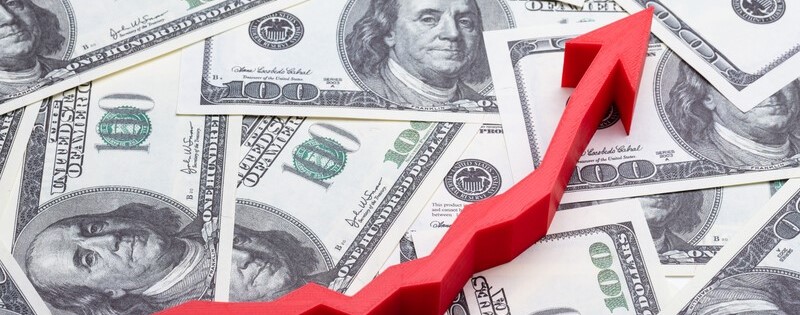There seems to be hope abounding in commercial real estate, according to the Federal Reserve’s Beige Book. Optimism tends to look toward the future — in this case, when the industry hopes interest rates will drop.
In the reality of the moment, though, that hasn’t changed how higher rates are still limiting real estate deals, as reported by the various Federal Reserve district banks and what they’re hearing from people in their multi-state regions. And the optimism may ultimately end, as the excitement over interest rate reductions may be premature.
Consider the following excerpts from the report.
Boston: “Commercial real estate activity weakened further modestly, and the outlook in that sector remained mostly pessimistic, despite expected declines in borrowing rates. In the already-weak office market, vacancy rates increased moderately on average, and Providence in particular saw the exit of a large downtown tenant. Office rents fell noticeably in the Boston area in recent months but were reportedly stable (if low) elsewhere. Demand for life sciences space in greater Boston dwindled further to very low levels. In the retail market, rents and vacancy rates were mostly steady at moderate levels, although lower-end malls continued to see elevated vacancies. Demand for industrial space slowed further at a modest pace, but rents and occupancy rates were described as mostly stable at healthy levels. Projections for commercial real estate activity in 2024 were mixed but remained pessimistic on balance.”
New York: “Commercial real estate markets mostly held steady. New York City office vacancy rates were steady near historic highs and rents declined slightly. Upstate New York office markets saw continued increases in vacancy rates, but rents were unchanged. In the industrial market, small improvements were seen in downstate New York while conditions in upstate New York deteriorated. Construction contacts reported that activity declined modestly since the last report. Office construction dropped, but industrial construction grew with high volumes under construction and significant deliveries set for 2024 in downstate New York and northern New Jersey.”
Philadelphia: “In nonresidential markets, leasing activity and transaction volumes continued to decline slightly—more so in the office market in which existing tenants continued to downsize their space and upgrade their quality as their leases expired. In contrast, current construction activity held steady, although many contacts expect that the project pipeline will shrink before the end of 2024. New projects are slowly emerging in heavy industry and infrastructure.” However, banks in the region generally noticed modest growth in CRE loan volumes.
Cleveland: “Residential construction and real estate contacts reported that activity remained soft in recent weeks. However, one homebuilder reported an increase in inquiries as mortgage rates declined. Nonresidential construction rebounded in recent weeks. One commercial builder noted that declining interest rates and greater optimism about the economic outlook had boosted demand. Moreover, multiple general contractors reported that customers had elected to move forward with previously delayed projects. Commercial real estate and construction contacts expected demand to remain mostly stable in the near term.”
Richmond: “Overall market activity in commercial real estate was flat this period. Retail remained strong, especially with fast casual restaurant chains. In the office sector, Class A office space was tightening with more leasing activity related to firms upgrading their space and moving away from central business districts. A lack of available financing continued to constrain new development and refinancing within the broader CRE sector. Construction projects were mainly limited to the industrial and multifamily segments. Contractors noted that due to the high cost of construction there were few new CRE projects and, as such, their backlog of work was shrinking.”
Atlanta: “The Sixth District’s office market continued to encounter negative absorption rates and diminishing occupancies. Leasing activity at the end of 2023 dropped to 2020 levels, creating a ‘tenant’s market,’ where landlords were forced to offer incentives. Market conditions are expected to remain challenged in 2024 as new construction is delivered. Other property segments experienced weakening conditions as well; contacts in industrial markets reported that the amount of square feet in the pipeline is running well ahead of absorption, resulting in higher vacancy levels. Contacts expressed concerns over rising commercial real estate loan maturities in 2024.”
Chicago: “Construction and real estate activity was little changed on balance over the reporting period. Nonresidential construction activity increased slightly, while prices were unchanged. One auto dealership group said that the expectation interest rates would begin falling soon was a factor in their proceeding with a project to increase service-center capacity. Commercial real estate activity was unchanged. Demand for industrial properties remained at elevated levels. While prices fell slightly, rents, vacancy rates and the availability of sublease space were all unchanged.”
St. Louis: “Commercial real estate rental markets continue to be stagnant in the office sector for downtown areas. Contacts reported continued commercial real estate sales in Northwest Arkansas, including two large multi-family units and a couple of retail sales. A large multi-family community is expected to start construction in Northwest Arkansas in early 2024.”
Minneapolis: “Construction activity was lower overall since the last report. Among roughly two dozen construction contacts, recent sales were lower and profits have been particularly hard hit. Recent hiring demand has fallen somewhat, but sentiment was modestly more positive for the early part of 2024. Among sectors, firms in infrastructure continued to fare better thanks to federal spending. November and December commercial permitting was generally flat or lower in the District’s larger markets compared with a year earlier. Residential building was constrained in many markets, but single-family permitting in Minneapolis-St. Paul saw sustained increases for several months, including December. Commercial real estate was flat overall. Vacancy rates for industrial space have ticked higher thanks to significant speculative building in the last year. Office markets remained soft, and reports of tenant concessions were rising. Retail vacancy has improved modestly thanks to stronger foot-traffic trends and lower levels of new construction.”
Kansas City: “Contacts indicated transaction activity for commercial properties was suppressed in recent weeks. Potential buyers of many office properties, and some multifamily properties, were reportedly waiting for a bottom as loans are set to be repriced over the medium term. Those buyers not waiting on the sidelines were reportedly pricing to a bottom among distressed sellers, resulting in large spreads between bid prices and ask prices that made price discovery difficult in most markets. Some contacts suggested that transaction activity may pick up slightly in coming months as appetites for restructuring loans may increase after year end. Yet, falling rents and rising insurance costs adversely affecting net operating incomes remained widely cited concerns inhibiting loan restructuring when desired.”
Dallas: “Activity in commercial real estate was little changed. Apartment leasing picked up slightly though rents remained flat. Office leasing remained weak; vacancy rates were elevated, and concessions remained widespread. Industrial vacancy rates rose as new supply continued to outpace demand. Macroeconomic uncertainty, high capital costs, and reduced appetite to lend continued to deter investment sales and construction starts across property types.”
San Francisco: “Conditions in the commercial real estate market were mixed. While demand for retail and industrial space was solid, office leasing activity remained weak. Transaction volumes of commercial property sales were down as sellers’ asking prices exceeded what buyers were willing to pay. Construction activity reportedly slowed for private-sector commercial projects due to financing constraints, while construction of government public and infrastructure projects expanded. Challenges obtaining some materials, particularly electrical equipment, persisted.”
Source: GlobeSt.








